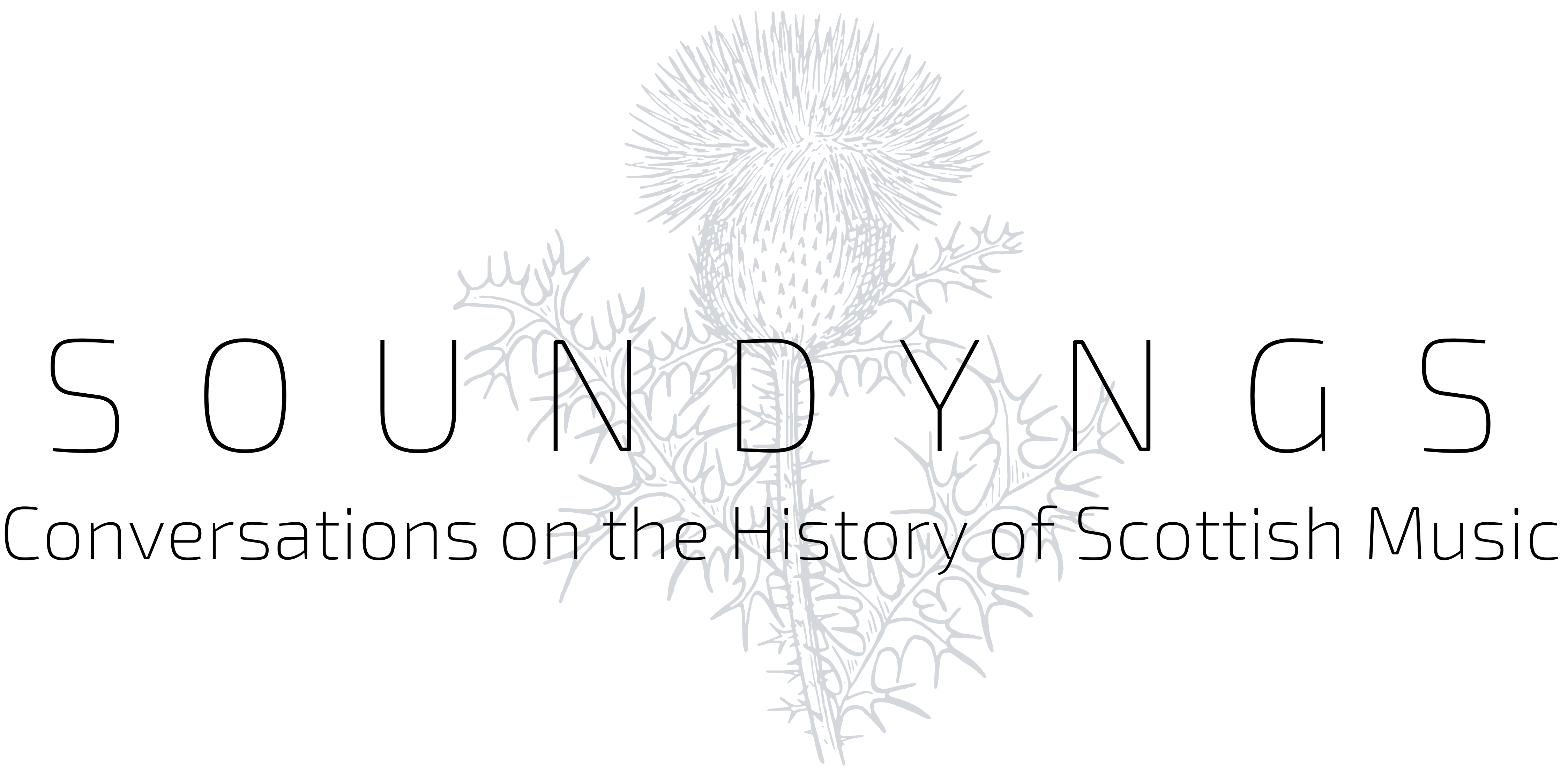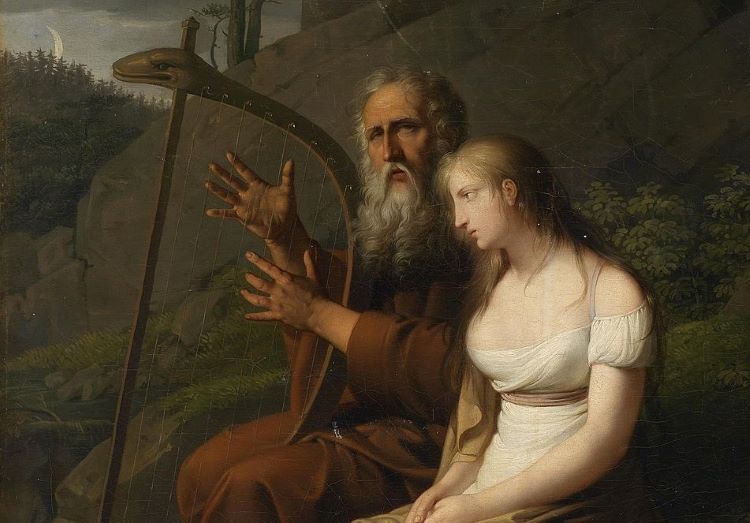James Porter, Beyond Fingal’s Cave: Ossian in the Musical Imagination (University of Rochester, 2019)
James Porter’s examination of the musical influences of Macpherson’s Ossianic translations tells the story of how these ‘seduced a continent’ and inspired two centuries and more of new musical composition (p1). Rich both in the range of works discussed in detail, this study also keeps in mind the contemporary cultural influences that shaped both Macpherson’s work and its aftershocks.
Recent studies into Macpherson’s translation work – most notably the collection of essays in Dafydd Moore’s edition of collected essays, The International Companion to James Macpherson and the Poems of Ossian, have explored the complicated mixture of creative fiction and respectful preservation which shaped Macpherson’s Ossian. As Cordula Lemke explains in her essay in that volume, “Nostalgic Ossian and the Transcreation of the Scottish Nation”, Macpherson’s notion that there was ‘a’ singular poet called Ossian and ‘a’ singular complete epic is a creative fiction: “in a manner typical of the Enlightenment thinkers’ obsession with unity, he created a harmonious entity out of the diverse ballads he encountered, and declared one of their characters, Ossian, to be their author” (Moore et al., p52).
Porter’s focus is on musical responses to Macpherson’s source texts rather than on literary translation, although similar issues arise of loyalty to sources and changes made in response to reception conditions. Porter uses the word ‘transmediation’ to describe a process of musical source adaptation which uses ‘devices of tonal shaping, colour, texture, and, occasionally, motifs or topics extraneous to the style, to as to create referential meanings beyond the musical score’ (p7).
There are, Porter argues, a complex of common ideas which translated readily into Romantic music, dominated by first opera, then vocal cantatas, and finally reflected in the programmatic structures of the symphonic poem. These are: the nobility of grief; the loneliness of the bardic author; nostalgia for a lost heroic age; strongly gendered models of heroic men and kind, hospitability women, both allowed to access and express strong feeling; and a wild natural landscape which provides a metaphor through pathetic fallacy for these emotions. These ideas found international traction and could be adapted to respond to various localised topical situations.
The book is shaped around a clear chronological map (proto-Romantic sentimentality, full-blown Romantic subjectivity, and modernist and post-modern reactions), which allows Porter to track generic twists across Europe while allowing opportunities to pause with chapters focussing on particular composers and works in more detail. At times, there are rather more ideas packed in than he has time to explore fully, but as an overview of the extraordinary reach of this body of texts, this is a fascinating and comprehensive survey. Clear notes on individual responses across most of the nations of Western Europe demonstrate the author’s command of the material.
For those interested particularly in the Scottish musical roots of Macpherson’s work, several points are usefully highlighted from Porter’s summary of past and current research.
- While much of the transmission of heroic Gaelic material in the wake of the Scottish Reformation was oral, a prior manuscript body of sources for Gaelic heroic literature undisputedly did exist, particularly in Ireland; the Fenian cycle which forms the core of the Macpherson translations was a shared repertoire linking the Irish with western Highland Scots.
- Macpherson was by no means the only 18th century collector of heroic Gaelic song. Other collectors included Captain Simon Fraser; the Reverent Patrick Macdonald of Kilmore, Argyll (Collection of Highland Vocal Airs, 1784); and in Caithness, the Reverend Alexander Pope of Reay early in the 18th century, and – recorded by Sir John Sinclair in 1808 – an “Ossianic air” recorded from oral performance by the Reverent Cameron of Halkirk. This material was still in oral circulation into the 20th century, and ‘Ossianic’ lays were still being recorded in the mid 20th . However, the status of oral sources in the 18th century gave rise to initial accusations of fakery.
- So, Macpherson didn’t fabricate the existence of this body of poetry and song, although he did go beyond the baseline evidence in his ambition to promote a bardic ‘author’, and an inferred singular epic composition.
- However, any translation inevitably changes and obscures aspects of the original. In music, it’s worth considering how the shift from Gaelic impacted on the sound and rhythmic structure of the material. Porter points out that the basis of ancient Gaelic poetry was syllabic, so tunes and rhythmic variation would alter from verse to verse. This is a key difference from melodies conceived in language systems dominated by syllabic-accentual poetics (p.23). Thus, in addition to the inevitable variation across an oral tradition, the baseline material would have seen variation within ballads.
- Romantic orchestral Ossianic material was saturated with harps. But not only were orchestral pedal harps very different from Gaelic wire-strung clarsachs. Gaelic bards and Gaelic harpers were not one and the same person. Although Celtic revivalists tended to represent the two together, often in the same person, and musical responses often included harps to suggest the co-presence of poetry and harping, this is a Romantic fiction.
Overall, what you will find in this book are careful summaries and musical descriptions of a wealth of Ossianic musical works that today are little-known. Porter makes the case that many of them merit re-discovery. Since quite a few reflect the national anxieties of their locality and period, this could be more problematic than he allows. Bardic choruses, warrior maidens, and laments for the heroic dead could find sympathetic audiences in a variety of European contexts, but might not quite resonate in the same way with a different audience. Indeed, that difference might be why so many different Ossianic musical works proliferated. For those interested in the particularities, highlights include:
- Harriet Wainewright’s English opera Comàla (1792), dedicated to a governor of India, and (perhaps) reflecting the insecurities of an occupying nation surrounded by potentially hostile Others (a topicality that Porter hints at but doesn’t explicitly explore);
- Napoleonic Ossianic operas, which reflect either French enthusiasm for disruptive heroic spirits, or resentments from those elsewhere in Europe facing Napoleonic invasion and control (which Porter does explore);
- French deployment of Ossianic motives in lyric scenes after the 1870/1 Franco-Prussian war;
- North American interest – particularly in Morman Utah – in Liza Lehmann’s Leaves from Ossian (1909) (this is really curious and needs more investigation);
- Twentieth century Ossianic responses in Scotland by Ian Whyte, Erik Chisholm, Cedric Thorpe Davie, and James Macmillan, reflecting different attitudes towards Romanticism and modernity, and possibly more consideration of these different composer’s attitudes to the place of Scotland within British culture.
Porter concludes “eclectic styles now mirror cross-cultural influences as well as a confusing globalism dominated by market forces. Fragmentary, episodic, and ambiguous, the poems of Ossian may still offer a channel for composers in these tumultuous, unsettling times.” (p.292) Future work that uses Porter’s survey as a jumping off point might think about how the wide-ranging examples he curates might also illustrate various post-colonial responses to the challenges presented by colonising hegemonic identities. Macpherson’s curious mixture of Whig modernism with Jacobite nostalgia finds echoes in subsequent musical Ossianic meditations which combine a wish to preserve residual identities and values alongside a drive to change. The heart of the issue is this. Macpherson’s nostalgic positing of a unified epic connected with 18th century post-Culloden search for unified Scottish identity. The fault lines between past and future puzzled his contemporaries, his successors, and continue to challenge composers. As Porter himself asks, ‘whose music is this’? (p,303). To which we might want to explore ‘who’ is being addressed by this body of work.
Further reading
- Howard Gaskill, The Poems of Ossian and Related Works: James Macpherson (Edinburgh: Edinburgh University Press, 2022). A new edition of all of Macpherson’s Ossianic poetry – Fragments of Ancient Poetry, Fingal and Tempora, and his essays, along with Hugh Blair’s Critical Dissertation on the Poems of Ossian. Core use of 1765 collected works edition with comparison of later editions and a glossary of Ossianic names.
- Howard Gaskill (ed.), Ossian Revisited (Edinburgh: Edinburgh University Press, 1990) – Macpherson’s influence on a range of influential thinkers and writers, and Macpherson’s own sense of the destruction of Gaelic culture post-1746.
- Dafydd Moore (ed.), The International Companion to James Macpherson and the Poems of Ossian (London: Association for Scottish Literary Studies, 2017) – multi-authored essays discuss Macpherson’s correspondence, the Gaelic contexts, Romantic constructions of Scottish nationalism, Ossianic influence across literature and art.
- Fiona J. Stafford, The Sublime Savage: A Study of James Macpherson and the Poems of Ossian (Edinburgh University Press, 1988). Biography discussing Macpherson’s place between Gaelic culture and the place of epic poetry within neoclassical 18th century culture.
- Derick S. Thomson, The Gaelic Sources of Macpherson’s Ossian (Aberdeen University Press, 1952). A ground-breaking work which first rehabilitated Macpherson from accusations of fakery, the foundation of modern rehabilitations of the repertoire of heroic Gaelic poetry,

